DJI Mavic 4 Pro vs DJI Air 3S: How much better is DJI’s latest flagship drone?
Half a year on and one league up, is the Mavic 4 Pro worth almost double the cost?
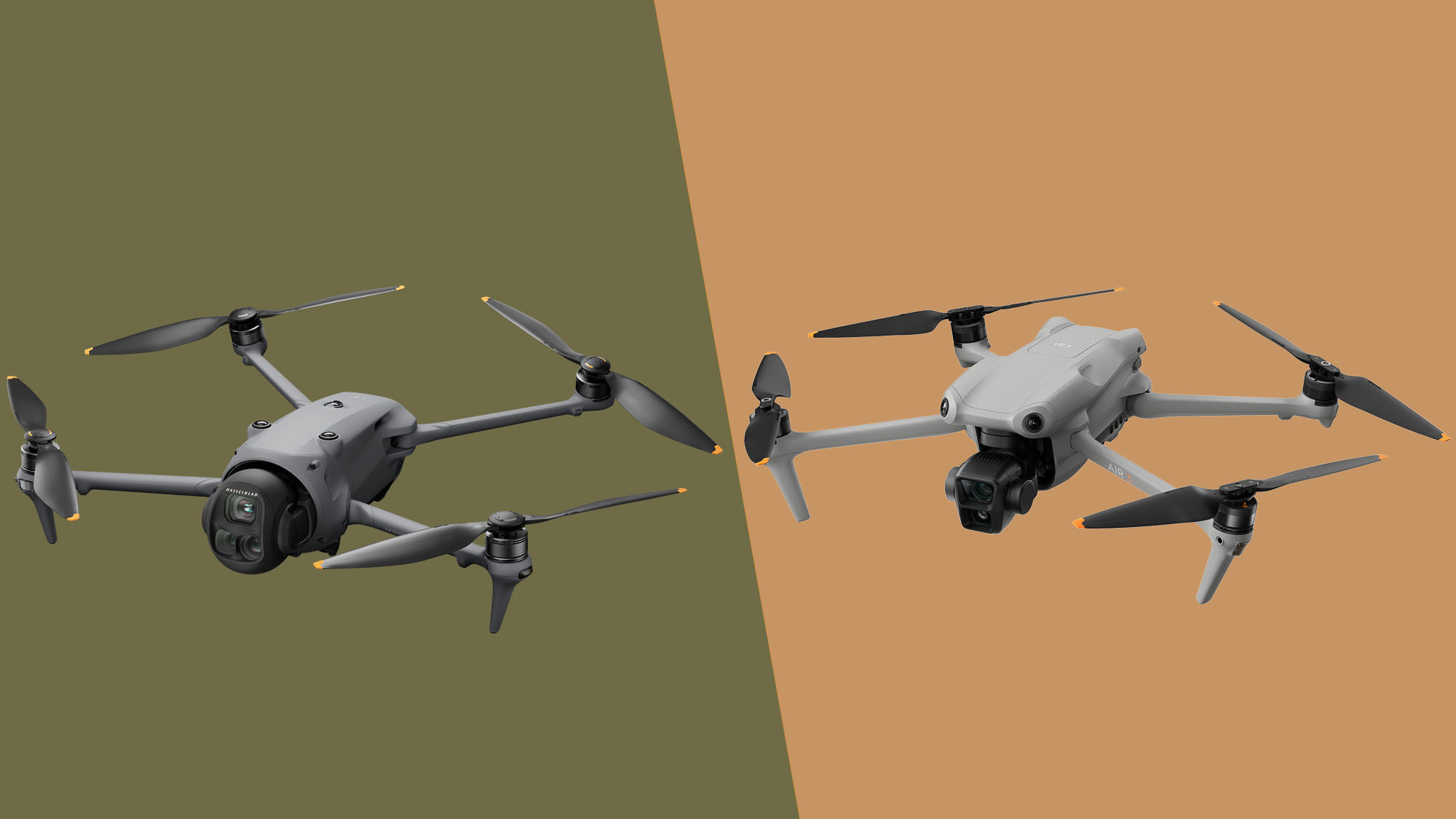
DJI's best camera drone, the Mavic 4 Pro boasts a gimbal-stabilized triple camera unit with unmatched range of movement for creative shots.
Probably DJI's best all-rounder drone, with superb safety features, main camera and affordable price tag. It's in the C1 weight category though.
The Mavic series is the pinnacle of DJI’s consumer drone range and it has new member, the DJI Mavic 4 Pro.
Sure, you can head off further into the stratosphere with DJI's Matrice models, but they aren’t really meant for ordinary drone fans or content creators. DJI’s Air 3S is the more important alternative here.
It was only released a handful of months before. And while the DJI Air 3S sits a step below the DJI Mavic 4 Pro in DJI's drone line-up, it has comparable features in some of the most important areas. And it is a whole lot cheaper.
Is the DJI Mavic 4 Pro really that much of a better drone than the DJI Air 3S? Here’s how the two compare, from pricing and camera specs to the flying time per charge and obstacle detection tech. Whichever model you opt for, you'll be getting one of DJI's best drones.
1. Price and availability
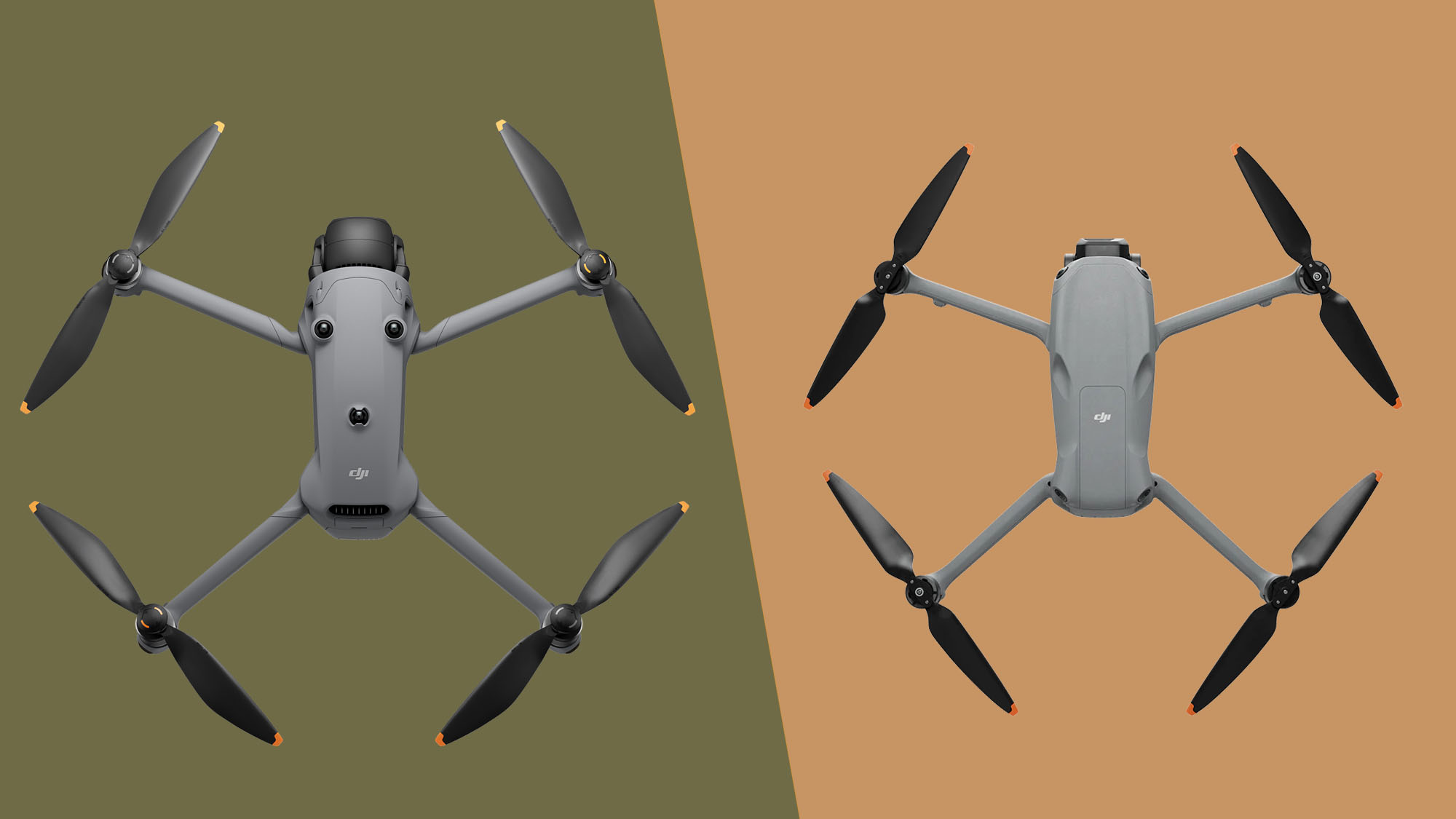
- DJI Mavic 4 Pro launched at £1879 / AU$3,099, with US launch TBC
- DJI Air 3S costs $1,099 / £989 / AU$1,699
The DJI Mavic 4 Pro was released a little over half a year after the Air 3S. It was announced on May 13, 2025, while the Air 3S arrived on October 15, 2024.
There’s quite a gulf in pricing, but that makes sense when the Mavic 4 Pro is a larger and altogether more feature-packed drone.
At release the DJI Air 3S cost $1,099 / £959 / AU$1,699 for the base kit. The Mavic 4 Pro costs £1879 / AU$3,099, coming close to double the price. US price and release plans are yet to be confirmed, thanks to the chaos caused by US tariffs and continued uncertainty surrounding a DJI drone ban: not only are DJI’s drones made in China, DJI itself is a Chinese company.
Sign up for breaking news, reviews, opinion, top tech deals, and more.
2. Design
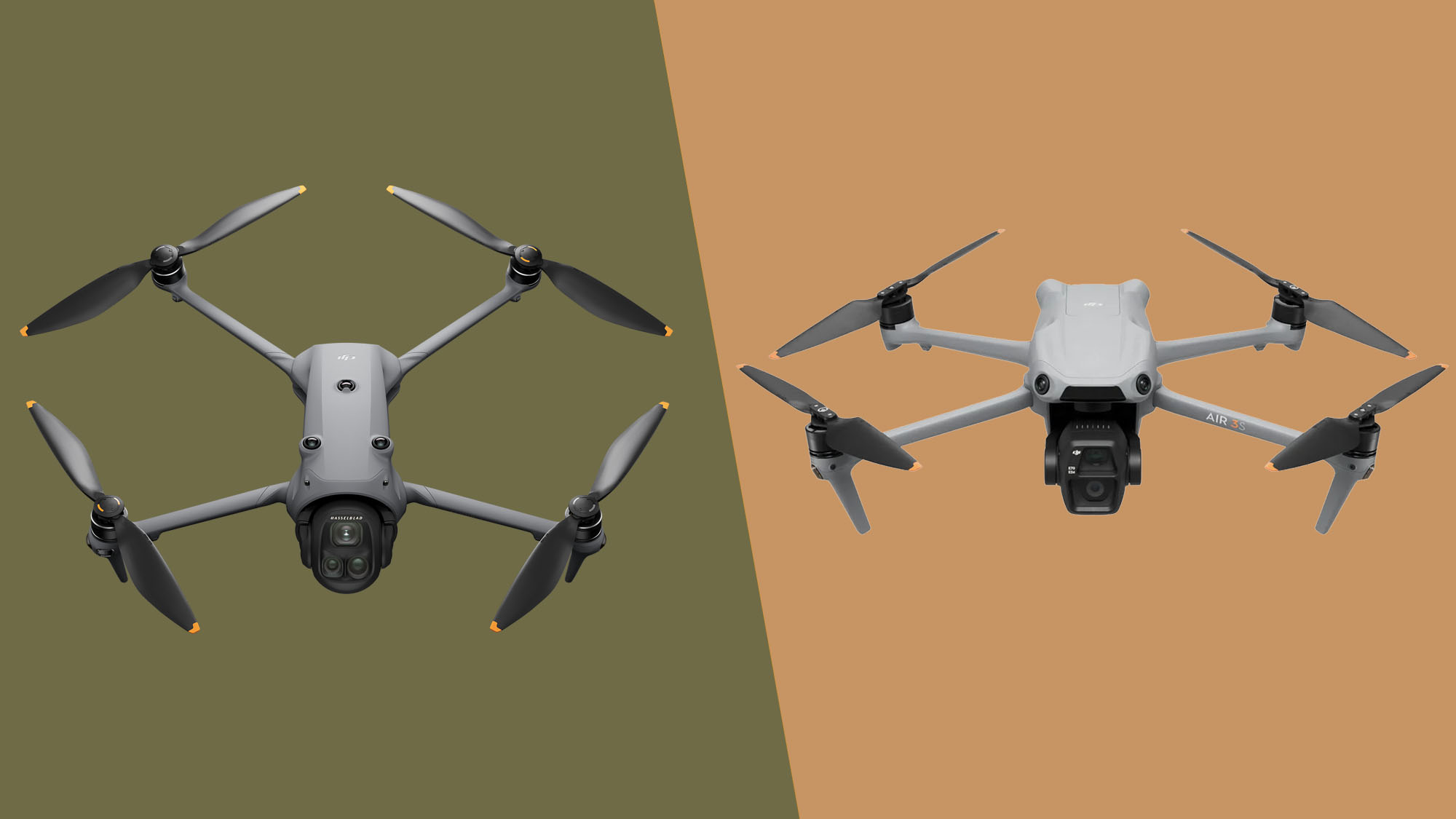
- DJI Mavic 4 Pro: Over 1KG, 390mm in longest dimension
- DJI Air 3S: 724g, 325mm in longest dimension
The DJI Mavic 4 Pro is a good deal larger and heavier than the DJI Air 3S, but it’s a slightly different class of drone.
An Air 3S measures 266.11×325.47×106.00 mm when unfolded, ready for flight, compared to the 328.7×390.5×135.2 mm of the Mavic 4 Pro. And the weight difference is greater than 300g too.
The DJI Mavic 4 Pro weighs 1,063g, to the 724g Air 3S. Of course, given both are far too large and too heavy to skirt around drone regulation, these factors arguably matter less than they would if we were discussing the kind of drone you might buy when starting out.
Their looks don’t warrant dwelling on too long, but you may notice how the camera module which juts out of the body is not quite the same. The gimbal hardware sits towards the bottom of the body’s front in the Air 3S, where it appears more of a straight continuation, a head to the body, of the DJI Mavic 4 Pro.
This design comes into play in the quite remarkable articulation of the Mavic 4 Pro gimbal, which we'll cover later.
3. Cameras and Shooting Modes
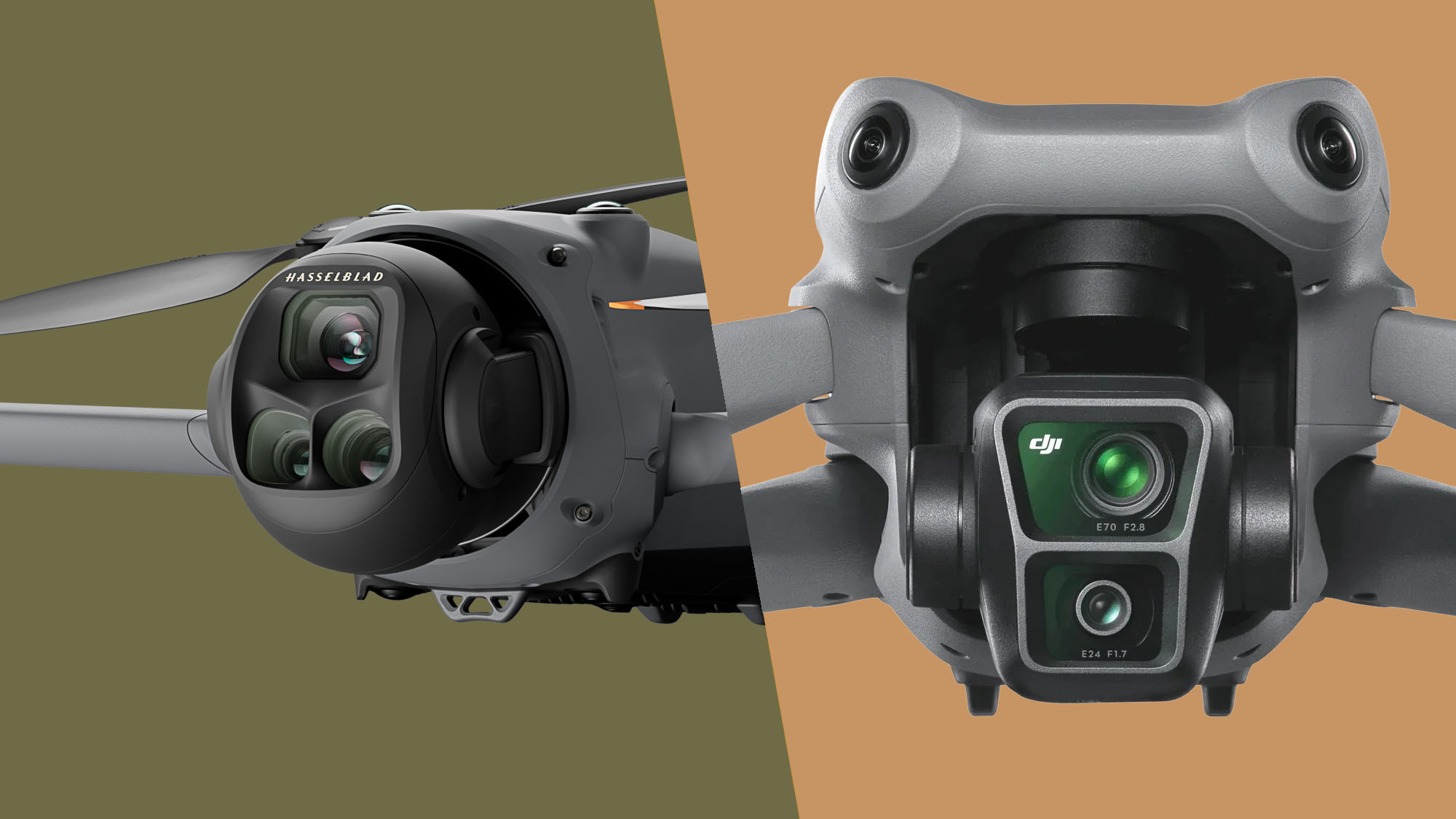
- DJI Mavic 4 Pro: Triple 28/70/168mm lenses, MFT primary sensor
- DJI Air 3S: Dual 24/70mm lenses, 1-inch primary sensor
The clearest practical upgrade you can notice from a fairly brief glance at these two drones: the Mavic 4 Pro has three cameras, the Air 3S two.
They both have a wide-angle lens camera, although the DJI Air 3S’s is actually the wider of the two — a 24mm equivalent view instead of a 28mm one. Each also has a 70mm lens, but only the Mavic 4 Pro gets the extended telephoto view, with a 168mm equivalent lens.
DJI has a fairly good excuse for leaning a little less wide in the higher-end drone too — despite the old Mavic 3 Pro using 24mm. It has a significantly wider maximum aperture than its direct predecessor, with an impressive range of f/2-11, compared to f/2.8-11.
The Air 3S’s has an even stronger f/1.8 figure. But its aperture is not variable, and the Mavic 3 Pro’s sensor is also much larger. Both factors make achieving a super-wide f-stop aperture figure more difficult.
Where the Air 3S has a respectable 1-inch sensor for this wide camera, the DJI Mavic 4 Pro has a Micro Four Thirds (MFT) one with twice the resolution — 100MP instead of 50MP. It’s a “Hasselblad” camera too. How much credit you give to these branding exercises is up to you, but it's a sign DJI considers it among the best of its gear.
The 70mm telephoto cameras are much more evenly matched. Both drones have a 48MP 1/1.3-inch sensor for this “mid telephoto” view, and an f/2.8 lens capable of focusing as close as three meters away.
As can the 168mm camera exclusive to the DJI Mavic 4 Pro. It also uses a respectably sized 1/1.5-inch sensor of 50MP resolution.
This drone has no junk cameras or fields of view, as you’d hope for a something at this level.
The DJI Mavic 4 Pro’s maximum video resolution mode is also higher than the DJI Air 3S’s, at 6K compared to 4K. That only counts for the 100MP wide camera, which can also capture 120fps slo-mo at 4K.
The rest of the cameras match the Air 3S, in resolution terms. You can shoot at up to 4K 120fps frames per second using the 70mm lens, for effectively 4x slo-mo. And the 168mm telephoto can hit 4K at 100fps.
Both drones can shoot in HDR at their maximum resolutions, but the lofty dynamic range claims for the Mavic 4 Pro are predictably slightly higher. DJI says footage can bring the equivalent of 14 stops in the Air 3S, or 16 stops in the Mavic, at least when using the wide camera.
4. Gimbal and Obstacle Detection
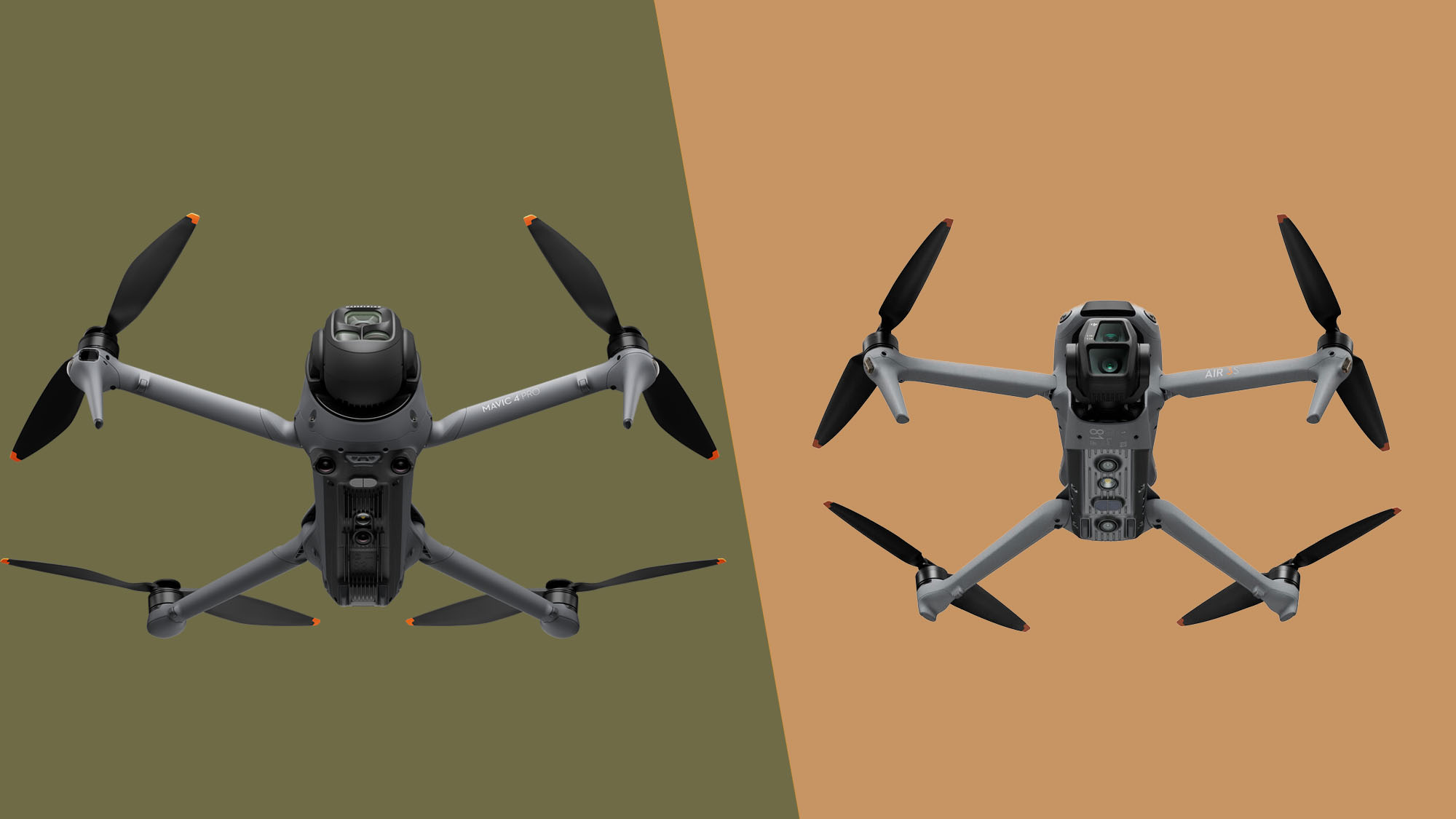
- DJI Mavic 4 Pro: 360-degree gimbal, LiDAR
- DJI Air 3S: 70-degree tilt gimbal, LiDAR
DJI thinks so much of the Mavic 4 Pro’s gimbal, it made it the center of the launch’s pre-teaser. "Spin your world" was the slogan.
Its rotational versatility is far greater than the DJI Air 3S’s, aside from in a basic pan where the movement actually reduces from +/- 27 degrees to +/-22 degrees.
Roll is the real eye-opener here. The Mavic 4 Pro gimbal can roll through -90 degrees to +450 degrees — significantly more than a full rotation. The +/- 50 degrees of the DJI Air 3S doesn’t come close.
Here are the numbers:
DJI Air 3S
Tilt - 135 to 70
Toll -50 ro 50
Pan -27 to 27
DJI Mavic 4 Pro
Tilt - 165 to 160
Roll - 90 to 450
Pan -22 to 22
It may take some creative thinking to work out some non-gimmicky uses for that freedom of roll movement. But it also means the Mavic 4 Pro can shoot vertical video via gimbal rather than a crop, although the drone also has a crop-based software mode too.
Thanks to the massive resolution of the Mavic 4 Pro, this mode still supports 4K/60 shooting using the wide camera. The Air 3S, and the Mavic’s secondary lenses, tap out at 2.7K resolution in this cropped vertical mode.
At its launch in 2024, the DJI Air 3S represented a distinct generational improvement in object and environment sensing abilities, and that comes to the Mavic 4 Pro too.
Back in 2024, DJI talked up the omnidirectional sensing skills of the Air 3S, with pairs of virtual eyes dotted around the drone.
These work great in daylight, but both drones also have a front-facing LiDAR system that can “see” in the dark, as well as an IR sensor on the bottom to sense proximity to the ground. Decent low-light obstacle sensing matters when we're dealing with camera sensors that can still achieve respectable image quality in relatively poor light conditions.
5. Flight speed and Transmission Range
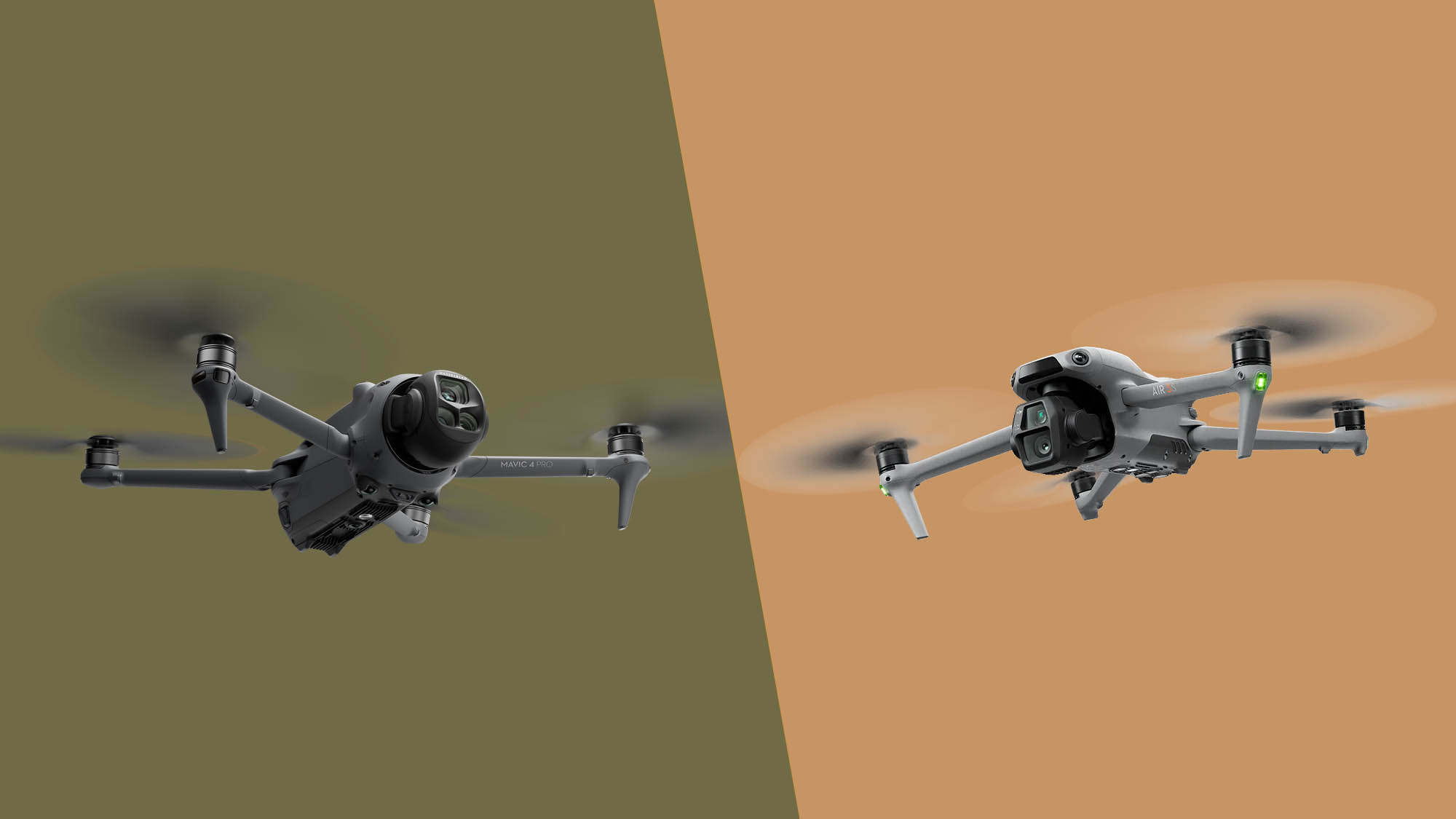
- DJI Mavic 4 Pro: Up to 25m/s, OB4+
- DJI Air 3S: Up to 21m/s, OB4
These two are not racing drones. But the Mavic 4 Pro is a little nipper than both the smaller Air 3S and its direct Mavic 3 Pro predecessor, in its fastest Sport mode.
Where the slower pair can reach 21m/s, around 47mph, the Mavic 4 Pro has been tested to hit 25m/s, 55mph.
The Air 3S and latest Mavic are a match on ascent speed, though, at 10m/s.
Transmission range to the controller increases too, thanks to an upgrade from DJI’s O4 standard to O4+. It’s rated for transmission of up to 30km in FCC territories (primarily the U.S. and Canada) or 15km in other areas. That’s based on zero obstruction or interference, so real world transmission range will be shorter.
This new standard does not up the frame rate or resolution of the live video feed, though, which is still capped at 1080/ 60p.
Wi-Fi standards have improved too. A jump from Wi-Fi 5 (ac) to Wi-Fi 6 (ax) means shorter-range data transmission speeds jump from 30MB/s to 80MB/s, when used with a compatible device.
5. Battery Life
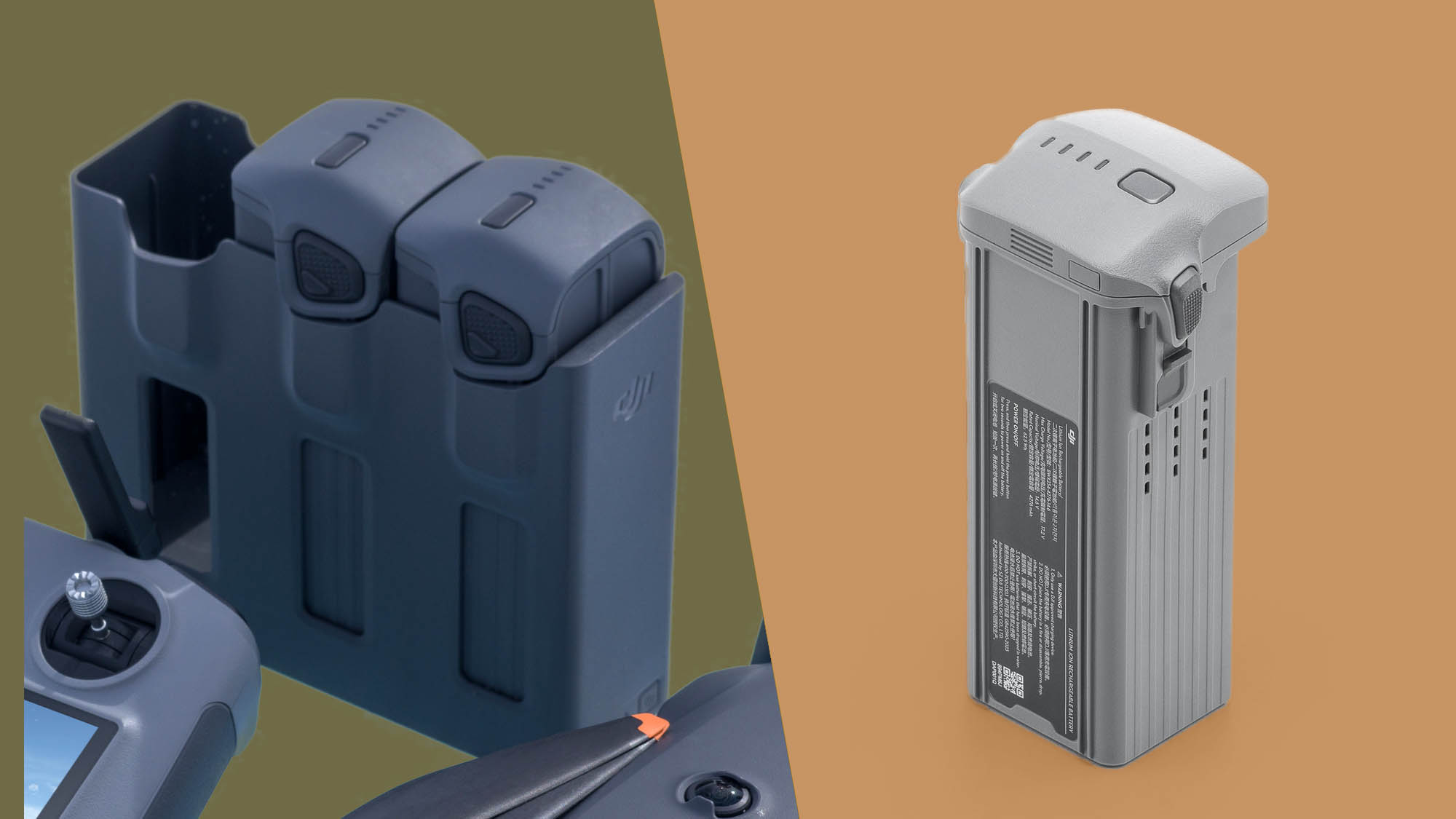
- DJI Mavic 4 Pro: Up to 51 minutes flight time, 240W charge support
- DJI Air 3S: Up to 45 minutes flight time, 100W charge
Despite being larger and heavier than the Air 3S, DJI has managed to bring longer flight times to the Mavic 4 Pro. It is rated for 51 minutes of easy flight, which is six minutes more than the 45 mins of the Air 3S.
Hovering time is improved too, from 41 minutes in the Air 3S to 45 minutes.
There’s no magic to it. The DJI Mavic 4 Pro simply has a much higher capacity battery, of 95.3Wh up from 62.5Wh in the Air 3S. There’s not much scope for a larger battery in the Mavic — head even a fraction above 100Wh and you’ll have to seek special permission to take a battery aboard an airplane. That’s an additional headache no-one needs.
DJI also offsets the additional charge time of a higher-capacity battery by providing support for 240W charging — although that adapter does not come cheap. It can charge a single battery in 51 minutes according to DJI, or a trio in 90 minutes.
The DJI Air 3S’s cells support 100W charging, which takes 60 minutes. Or if you’re stuck with 65W charging, an Air 3S battery will take around 90 minutes, or a Mavic 4 Pro one just shy of two hours at around 115 minutes. With these high capacity cells you really start to appreciate a high-wattage power source.
Early verdict

Does the average DJI Air 3S user need to get to eBay stat in order to prepare for a Mavic 4 Pro upgrade? Probably not, however the pricier model has significant benefits in a bunch of key areas without any hits to flight time or speed.
A larger wide angle camera sensor with higher resolution capture raises the ceiling on image quality. The extra-flexible gimbal frees up compositional potential too, including vertical shooting that doesn’t involve the usual drastic sensor crop.
168mm shooting in a drone may sound a tricky prospect but, just as we saw in the Mavic 3 Pro, it's actually a useful additional tool for any drone shooter's arsenal.
Increased size and weight aside, there's no obvious reason to pick an Air 3S over a Mavic 4 Pro — if money is no object. However, more now than ever for many of us, money is rarely not a consideration. And the gulf here is, well, fairly substantial.
You might also like

Andrew is a freelance journalist and has been writing and editing for some of the UK's top tech and lifestyle publications including TrustedReviews, Stuff, T3, TechRadar, Lifehacker and others.
You must confirm your public display name before commenting
Please logout and then login again, you will then be prompted to enter your display name.